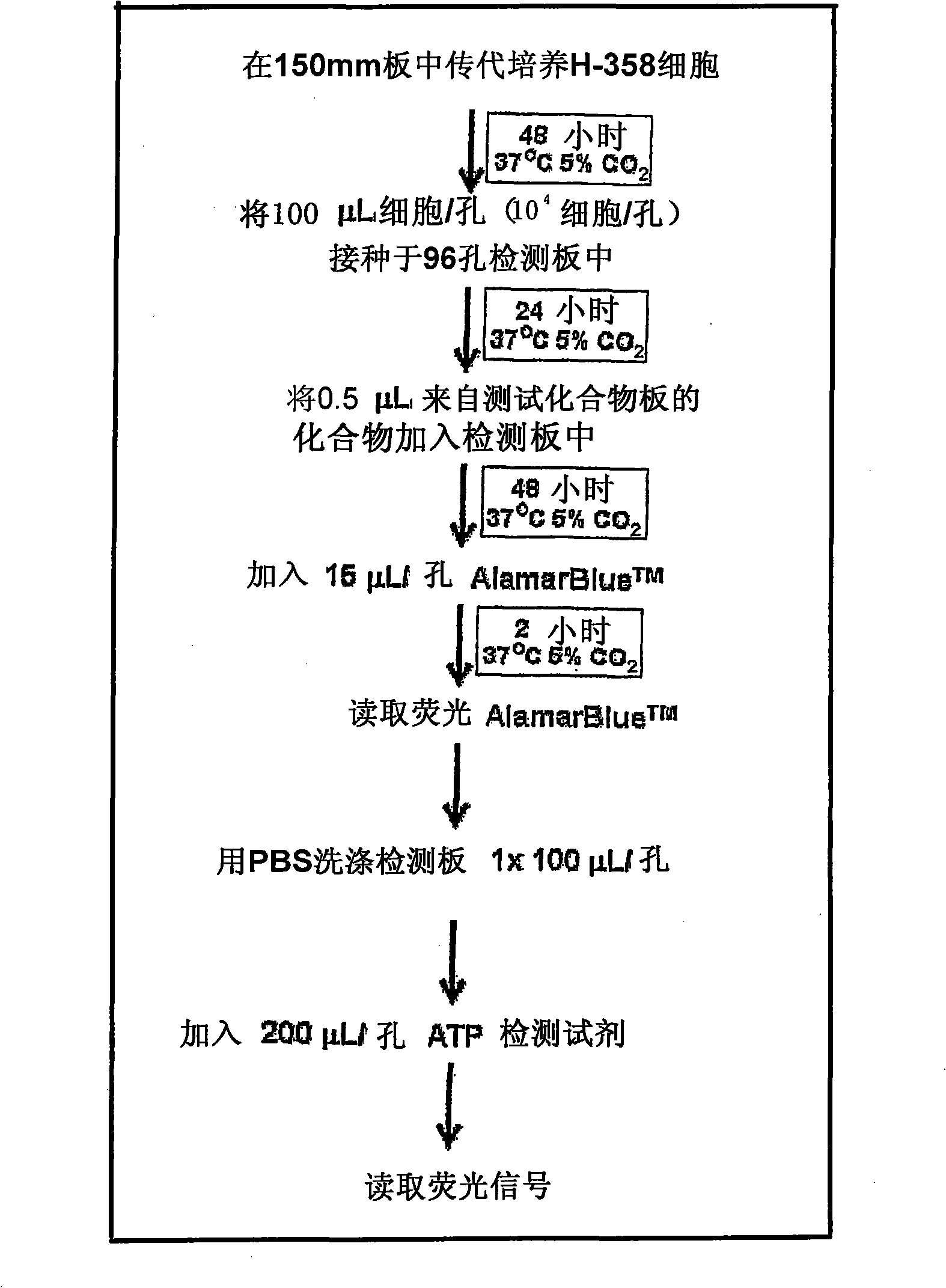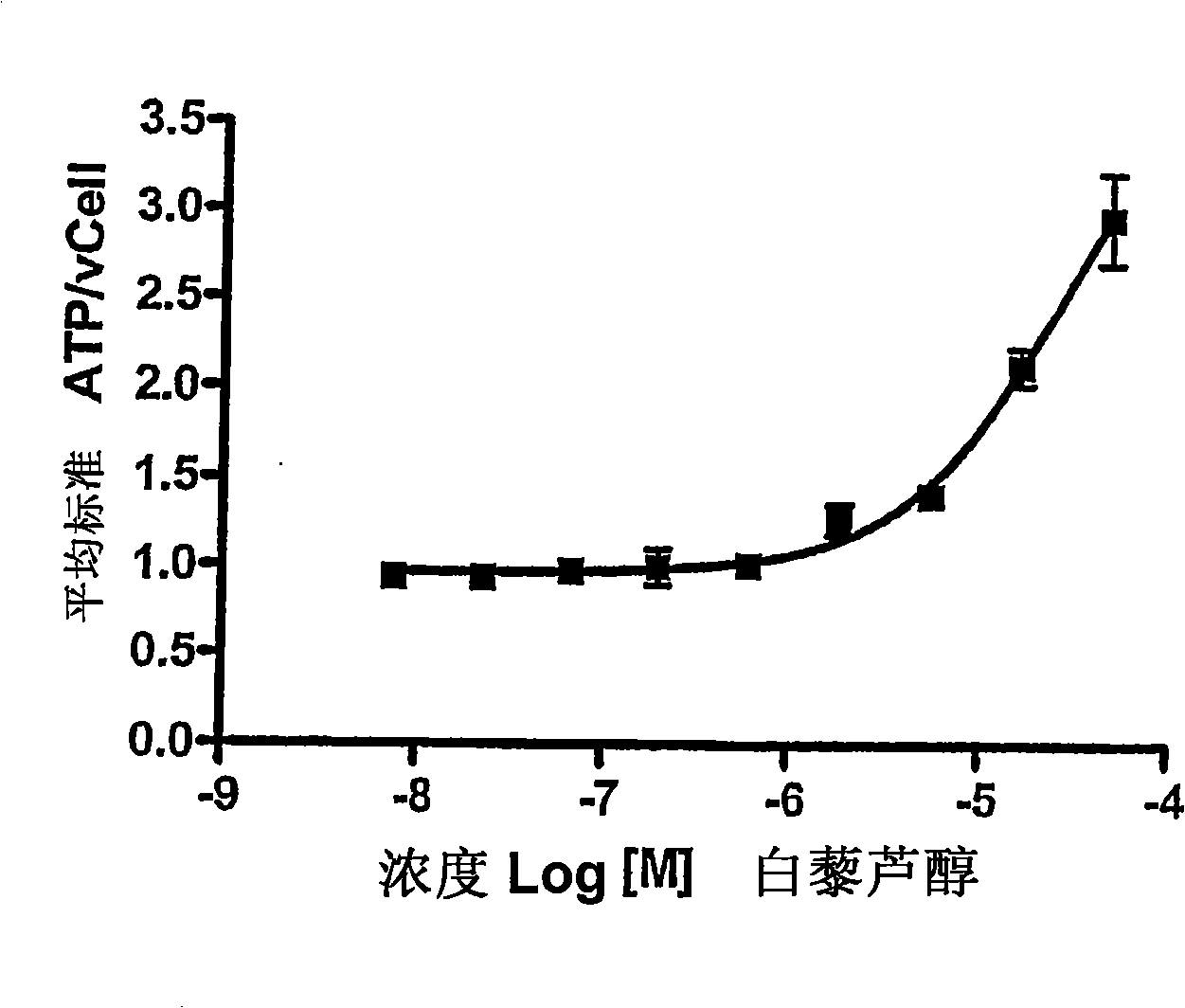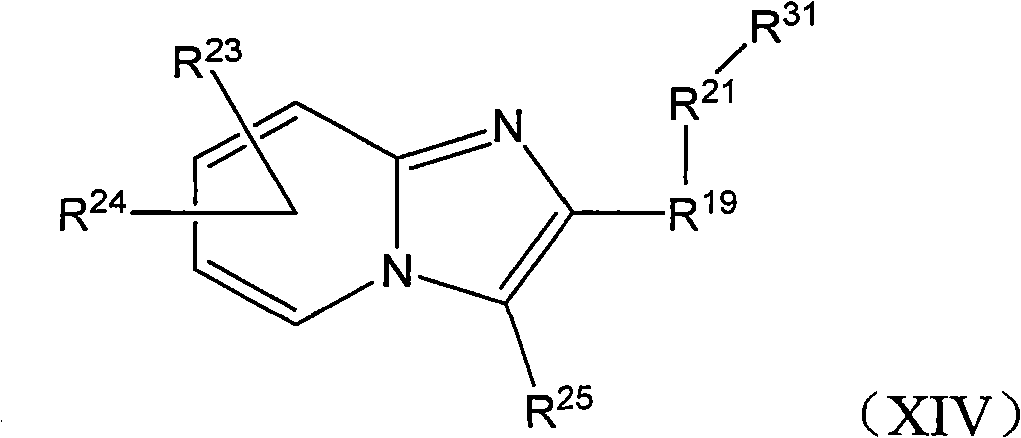Benzimidazole derivatives as SIRTUIN modulators
A compound, R24 technology, applied in the direction of antitoxins, drug combinations, metabolic diseases, etc., can solve the problem of not prolonging the lifespan of mutant sir2 strains
- Summary
- Abstract
- Description
- Claims
- Application Information
AI Technical Summary
Problems solved by technology
Method used
Image
Examples
Embodiment 1
[1670] Example 1 Synthesis and characterization of Sirtuin modulator
[1671] General route:
[1672] Route 1:
[1673]
[1674] Route 2:
[1675]
[1676] Route 3:
[1677]
[1678] Route 4:
[1679]
[1680] Test part:
[1681] Abbreviations used in the experimental part:
[1682] HATU=O-(7-azabenzotriazol-1-yl)-N,N,N’,N’-tetramethylurea hexafluorophosphate
[1683] NMM=4-Methylmorpholine
[1684] DIEA=N,N-diisopropylethylamine
[1685] DMF=N,N-Dimethylformamide
[1686] CH 2 Cl 2 = Dichloromethane
[1687] EtOAc = ethyl acetate
[1688] MeOH = methanol
[1689] Na 2 SO 4 = Sodium sulfate
[1690] PPA = polyphosphoric acid
[1691] Et 3 N = triethylamine
[1692] rt = room temperature
[1693] Preparation of 3-(thiazolo[5,4-c]pyridin-2-yl)aniline:
[1694]
[1695] 4-aminopyridin-3-yldiisopropylcarbamodithioate (4-aminopyridin-3-yldiisopropylcarbamodithioate) according to Smith et al, Sulfur Lett. 1994 vol 17, p.197 and E.Ma, Molecules 2003, vol 8, p.678-686.
[1696] ...
Embodiment 2
[2447] Example 2: Identification of Sirtuin modulators
[2448] An assay based on fluorescence polarization or mass spectrometry was used to identify the activity of SIRT1 modulators. The same assay can be used to identify modulators of any sirtuin protein. The fluorescence polarization assay uses one of two different peptides based on the known sirtuin deacetylation target-p53 fragment. Compounds 1-18 were detected with a substrate containing peptide 1 with the following 14 amino acid residues: GQSTSSHSK(Ac)NleSTEG (SEQ ID NO:1), where K(Ac) is an acetylated lysine residue, Nle It is norleucine. The peptide was labeled with the fluorescent group MR121 (excitation 635nm / emission 680nm) at the C-terminus, and biotin at the N-terminus. The sequence of the peptide substrate is based on a variety of modified p53. In particular, unlike acetylated lysine, all arginine and leucine residues are replaced by serine, making the peptide less prone to cleavage by trypsin in the absence of deac...
Embodiment 3
[2584] Example 3: Using SIRT3 to identify Sirtuin modulators
[2585] The activity of SIRT3 modulator was identified by fluorescence polarization assay. The same assay method can be used to identify any sirtuin protein modulator. This assay utilizes a peptide substrate based on the known sirtuin deacetylation target-histone H4 fragment. The substrate contains a peptide with the following 14 amino acid residues: Biotin-GASSHSK(Ac)VLK(MR121) (SEQ ID NO: 4), where K(Ac) is an acetylated lysine residue. The peptide was labeled with the fluorescent group MR121 (excitation 635nm / emission 680nm) at the C-terminus and biotin at the N-terminus.
[2586] Peptide substrate in NAD + Contact with sirtuin protein in the presence of deacetylation of the substrate makes it susceptible to trypsin-induced cleavage. Then trypsin is added and the reaction is completed (for example, the deacetylated substrate is cleaved), and the MR121 fragment is released. Then streptavidin is added to the reaction, ...
PUM
| Property | Measurement | Unit |
|---|---|---|
| diameter | aaaaa | aaaaa |
| diameter | aaaaa | aaaaa |
Abstract
Description
Claims
Application Information
 Login to View More
Login to View More - R&D
- Intellectual Property
- Life Sciences
- Materials
- Tech Scout
- Unparalleled Data Quality
- Higher Quality Content
- 60% Fewer Hallucinations
Browse by: Latest US Patents, China's latest patents, Technical Efficacy Thesaurus, Application Domain, Technology Topic, Popular Technical Reports.
© 2025 PatSnap. All rights reserved.Legal|Privacy policy|Modern Slavery Act Transparency Statement|Sitemap|About US| Contact US: help@patsnap.com



